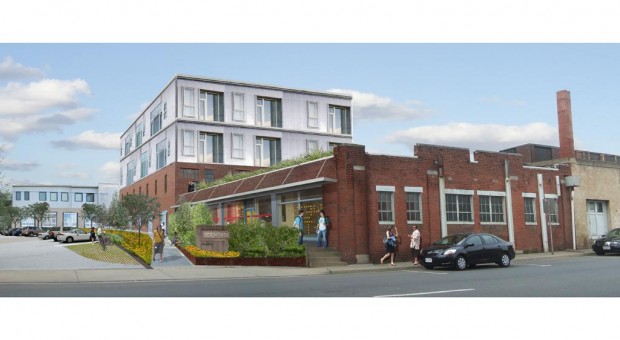- Ice House
Ice House

Harrisonburg, Virginia
The Ice House Complex is an abandoned set of buildings with an interior area of more than 80,000 square feet on slightly over 2 acres in downtown Harrisonburg. Built for ice and cold storage, the Ice House Complex is a structural heavyweight capable of handling just about any program type one can imagine. The size and structure, and proximity to both downtown and James Madison University (JMU), are the driving factors behind the significant adaptive reuse potential for the Ice House Complex.
Michael Singer Studio was invited to study the Ice House Complex to explore adaptive reuse potential through programming, conceptual planning and introducing regenerative environmental strategies affecting water, ecology and energy. The Studio conducted an intensive week of site investigations and focus group meetings with a variety of stakeholders selected by the client. Many of the initial program ideas were tested with these groups for viability and to explore potential interconnections with other area programs. For instance, the adjacent farmer’s market suggested possibilities for food cold storage and on-site preparation facilities. This concept then led to potential connections with regional commercial kitchens (oddly lacking in this particular region surrounded by farms), a connection to an in-house restaurant and an off-site co-op, a rooftop market garden, an aquaponics lab and a demonstration kitchen for JMU life-long learning programs.
The Vision Study created by Singer Studio presents a range of concepts and interconnected program possibilities rather than a prescriptive architectural solution. One of the concepts is the removal of ancillary non-historic industrial space from the core of the complex in order to open up several façades to natural light and ventilation. This concept allows for additional residential units which support the overall economic viability of the project as a whole. The exposure of additional historic façades also contributes to the project’s application for historic tax credits. Another concept is the conversion of industrial truck and rail loading docks into a rear vehicular access driveway and a 2 level parking structure. Other concepts include the use of the highly structured building cores to support a range of façade improvements (since the facades are not an integral part of the structures) and rooftop amenities, direct interactions with the creek adjacent to the site and numerous adaptive environmental strategies.
Artist / Designer: Michael Singer
Singer Studio Team: Jason Bregman and Jonathan Fogelson
Developer: Barry Kelley of Matchbox and Andrew Forward
JMU and community liaison: David Ehrenpreis

